In episode #114, Dr. Jill interviews Lara Salyer about flow triggers and how they can prevent burnout and create emotional happiness. Learn about the different ways to achieve flow in your life – from fingers-pints to creating flow on demand and find out how you can start living a more joyful existence!
Key Points:
- How to use flow triggers to increase joy, fun and creativity in your life and tap into the power of neuroplasticity
- What do passion, purpose, autonomy and mastery have to do with flow states?
- How can flow increase you joy and prevent burnout? How can flow increase physical healing and emotional happiness?
The Guest – Dr. Lara Salyer
Dr. Lara Salyer, DO, IFMCP was shocked to discover herself struggling with burnout 15 years into her career as a rural family medicine physician. To alleviate this heartbreak of feeling trapped in a lackluster career, she started painting, drawing and running. This regular dose of neurochemical flow state resulted in improved wellbeing and decreased stress. She began studying the effects of stress/cortisol on our physiology, culminating in her decision to certify with the Institute for Functional Medicine.
She resigned from her employed position and opened a holistic membership practice where she leverages technology to build a cohesive tribe of wellness in her local community through innovative group medical visits, online health education, as well as traditional individual services. She continued her training at the Flow Research Collective’s certification program to coach flow acquisition.
She brings this into her professional mentorship program as she teaches colleagues how to paint their own creative, efficient, and organized work/life masterpiece. Dr. Lara speaks across the globe on her mission to teach 1 million health professionals how to tap into creative flow daily so they can reclaim autonomy, improve happiness, and eradicate burnout. She authored her own memoir, Right Brain Rescue: One physician's journey from burnout to bliss reveals the creative muse in all of us, available on Amazon, and lives in Monroe, Wisconsin with her husband, their three children, a manic dog, and infinite piles of laundry.
You can learn more about her at https://drlarasalyer.com/
Dr. Jill
Dr. Jill Carnahan is Your Functional Medicine Expert® dually board certified in Family Medicine for ten years and in Integrative Holistic Medicine since 2015. She is the Medical Director of Flatiron Functional Medicine, a widely sought-after practice with a broad range of clinical services including functional medical protocols, nutritional consultations, chiropractic therapy, naturopathic medicine, acupuncture, and massage therapy. As a survivor of breast cancer, Crohn’s disease, and toxic mold illness she brings a unique perspective to treating patients in the midst of complex and chronic illness. Her clinic specializes in searching for the underlying triggers that contribute to illness through cutting-edge lab testing and tailoring the intervention to specific needs.
Featured in Shape Magazine, Parade, Forbes, MindBodyGreen, First for Women, Townsend Newsletter, and The Huffington Post as well as seen on NBC News and Health segments with Joan Lunden, Dr. Jill is a media must-have. Her YouTube channel and podcast features live interviews with the healthcare world’s most respected names.
A popular inspirational speaker and prolific writer, she shares her knowledge of hope, health, and healing live on stage and through newsletters, articles, books, and social media posts! People relate to Dr. Jill’s science-backed opinions delivered with authenticity, love and humor. She is known for inspiring her audience to thrive even in the midst of difficulties.
The Podcast
The Video
The Transcript
#114: Dr. Jill Interviews Dr. Lara Salyer on Flow States
Text:
Dr. Jill 00:13
Today I have a special guest, Dr. Lara Salyer. I'll just give you a little bio on her. She's IFMCP certified just like I am, and we actually met through a training with flow. So we're talking about flow today. If you don't know what that is, stay tuned. It's really fun, it's exciting, it'll make your life so much more amazing, really. You can tap into all those creative pursuits and things that you've always wanted to do, and do them with much more ease as well. Lara will enlighten us on that. She was shocked to discover herself struggling with burnout 15 years [into] her career as a rural family medicine physician. To alleviate this heartbreak of feeling trapped in a lackluster career, she started painting, drawing, and running—all flow state inducers, right?
Dr. Jill 1:04
The regular dose of neurochemical flow states resulted in improved well-being and decreased stress. So just like most of us, you learned through your own journey, which we're going to talk about. She began studying the effects of stress/cortisol on our physiology, culminating in her decision to certify with the IFM. She resigned from her employee position and opened a holistic membership practice where she leverages technology to build a cohesive tribe of wellness in her local community through innovative group medical visits, online health education, and traditional individual services. She has continued in the Flow Research Collective’s certification program, which is where we met. We kind of found each other. We were like, ‘IFM!' She speaks across the globe on her mission. I just love the content you're creating.
Dr. Jill 1:48
Like we talked about right before we got on here, just around the right brain and around creativity, because, again, most of us as physicians are pretty analytical. So we're like, finding this other side, right? So let's just get in without further ado. Tell me your story. Clearly, I introduced you; I have a little glimpse of your story. But how did you get into medicine? And then tell us a little about what happened.
Dr. Lara Salyer 02:09
Thank you so much, Dr. Jill. First, I feel like we almost need to start with I-l-l-i-n-i.
Dr. Jill 02:14
Yes!
Dr. Lara Salyer 02:15
Right? I mean, this is where it all begins, at the University of Illinois. I believe you and I share that alumni status, so I would say getting into medicine is just like any bright-eyed bushy-tailed pre-med where you want to save the world and help patients. And it's fascinating! Who doesn't love learning about the body? But fast forward to how technology has advanced, how our healthcare system has advanced–to our benefit or our patients' [benefit]—and suddenly there I was barely 41 and I was burned out. I loved the idea of being a rural family doctor. I loved taking care of babies and grandmas and sewing up lacerations and putting casts on.
Dr. Lara Salyer 02:55
Being in a rural practice was good in theory, but what I did not recognize until it was almost too late was that I was burning out. And in a last-ditch effort to burn up my CME, I thought, “I'm going to resign.” I already made that decision. I was going to resign from my employed position. I didn't yet know how I was going to use my skills. So I had worked with a physician life coach and I had looked at alternative ways to use my skills. And I thought: “One more CME. Let's see.” And I went to IFM, AMFCP, which is their five-day flagship buffet course. And I thought—yoga, organic food—sounds like a fun time. Little did I know it would make me fall right back in love with medicine. I realized it wasn't medicine that was burning me out; it was just the way it was being practiced. So that lit a fire under me. Even before then, as I started running or drawing or doing things to try and alleviate this feeling, what I was doing was getting myself into flow and realizing that that was really helping bolster this burned-out feeling.
Dr. Lara Salyer 04:01
Once you align your values and there's congruence, as you know, you have a purpose and a mission that nobody can stop you. So this is where I am today, basically mentoring professionals across the world, helping them do their own catalyst medical practice where they can have their own creativity and work/life masterpiece. So I'm loving it!
Dr. Jill 04:22
I love it too. Whether it's your post, your today, live, or anywhere, you feel the joy and you feel a spark. Like you said, we had it going into medicine. We had this passion for healing and changing the world and helping patients. And it's so true about our conventional system—as I've written my book recently, I write about the medical school experience—it almost trains out the empathy and it trains out the creativity. So you're in this straight [line]. It's very masculine, which is great energy to be driven [by], but we need both, and for the more feminine and creative [energy] to come back. At least myself, I used to wear the black pantsuits. And I'm like, “What was that?”
Dr. Lara Salyer 05:02
Yes! It's almost like we need different parts of our personality. And then you ascribe to the family systems and parts; we do need to embrace all our parts. But I feel like a lot of us are given this promise that it'll get better, so we put these parts on the back burner. I put my creativity on the back burner, as did you and many of us, thinking that eventually this will all work itself out and it's just not looking very well for us. So we have to reclaim it and empower and actually stand firm in holding tight to your creativity and nurturing it and flow because that's really what can help you alleviate burnout and prevent it.
Dr. Jill 05:38
It's so true. And I love that you organically found—and obviously, the flow initiative is so powerful—that training. How did you end up finding that? From [the time of] burnout [forward], tell us how you kind of fell into that.
Dr. Lara Salyer 05:52
So I love this story because I feel like anybody can feel it. When you're burned out, sometimes you don't know the label. I was actually very skeptical. I thought, “That's crazy. I'm not burned out.” But you know it rather than labeling it. And I remember the time my nurse walked in. It was [like] every other typical day in family practice. She put down on the corner of my desk an obituary of a patient that I had had. An elderly woman, it's not surprising she passed. You have nineteen hundred patients and you're going to have some that pass. She had lived a long life, and I remember reflecting. She was a really sweet lady. She had cancer for five years and had a great support system—the family was there. So it was more of a relief that she would be gone. Normally, that would trigger me to open my desk drawer and pen a little short card saying: “It was an honor taking care of your grandmother. I loved seeing the pictures of her dogs,” or “her knitting,” or whatever that was. But instead, that day I felt immense celebration and jubilation that there was one less person in this world that I had to worry about. I mean, talk about shameful, right? But talk about the obvious as well, that that is the epitome of caregiver burden, where you feel like you're just taking care of so many things. So that caused me to pause because that is not the kind of doctor I ever wanted to be. That really made me more introspective. So I started doing more things [like] drawing. I'm not a trained artist, but I grew up in a very creative family. I can play the clarinet, and I started running more and doing more things to try and figure myself out. And as you know, when you put your brain on autopilot—oh! Magic happens. You start getting connections and epiphanies and have a great ‘Aha!' moment of flow. And it led me down that path of, “Well, maybe there are other solutions,” which…
Dr. Jill 07:39
“Maybe I can actually heal people and help people, but in a way that's different.” I relate to this because, again, both of us [had] this conventional [system]. Unfortunately, the conventional system is very masculine, very driven, very analytical, which are all good things—we need both parts. But it was this refinding [that] for me happened after I moved out to Colorado and I started my own practice. I'm still pretty much in that thing. But the same thing, I realized: “Oh my gosh! There's this creativity that needs to blossom.” I started writing and I started coloring. Coloring was a transition for me, like coloring books. I'm not the artist you are, but still to this day when I need to get to a flow state, I'll bring all my coloring books and I'll go to the coffee shop.
Dr. Jill 08:19
This is a funny story that I'm going to tell you; I don't think I've told anyone publicly. The first thing that is in my car all the time is a big bag of beautiful markers and pencils and coloring books. So anytime, anywhere, if someone needs therapy or a friendship, I bring out my coloring books and I say, “Let's color!” And you know what's funny? They kind of give me this look. But every time the kinds of conversations we have, they open up—it just opens up this place because when you're coloring, you're so real. You go back to that childlike state. So it's been magical with my friends and my conversations. And now they'll be like: “Do you have your coloring books? Can we color?”
Dr. Lara Salyer 08:51
I love that!
Dr. Jill 08:52
Here's the funny thing, Lara. So a couple of years ago in my garage, which is secure, someone got in and actually broke into my car and nothing was stolen except my old sunglasses, which were only precious to me. They had no value. And I had a bag in the back that was [with] coloring books, and they stole my coloring books. I had to laugh so hard because every one of them was inspirational, and some were verses, some were just inspirational quotes. But I thought, “Oh, that thief must have needed my coloring book.”
Dr. Lara Salyer 09:18
Maybe that was something he needed, right?
Dr. Jill 09:20
I just laughed. I was like, “Well, good, that's good that they got that.” They probably thought it was something really valuable, and hopefully, it made their day in a way.
Dr. Lara Salyer 09:28
Right? There is something primitive, though, and really cool about holding colors. In all the workshops I do with residencies or hospitals, I always laugh because there's always one person that doesn't want to play my reindeer game. They're like, “I don't want to color. This is stupid. I'm not an artist. Why am I doing this?” And that person is the one that's like, “Where's that purple marker?” or, “Where's that crayon?”—because we can't help but color. And how lovely that you do this and share this with your friends, that they're witnessing this in that parallel play that we're used to when were little. It's just a little story.
Dr. Jill 10:00
Yes, and like you said, it brings ideas and creativity. As you're listening, we can talk all day; Lara and I can have this fun conversation. But what I think might relate, if you're listening out there, is that during the pandemic, people have been stirred up, like: “What am I doing?” “Do I love this? Do I hate this?” I think it's the burnout, the overwhelm, or whatever kinds of things that are different that have changed. And now we're coming back out of course. But there's a lot I think that shifted for a lot of people. So if you're listening, I bet many of you can relate. Feel free to share in the chat, maybe the shifts or transitions you saw, because I think a lot of people are reevaluating: What is work life? What's home life? What's balance? What's flow? So I want to just say that because I think people are probably hearing us and maybe getting thoughts for themselves, either from their own experiences or from the change where we all, deep down, [feel] like, “Well, there's something more,” right? And that's what you said. We both had this shift. I went from a conventional hospital as a medical director and crazy hours to starting my own practice, and very similarly, I tried to create a place that was sustainable and that I love going into. And you too. So let's talk about flow though, because I feel like flow is how we get out of the stuckness, right?
Dr. Lara Salyer 11:11
Yes! Oh my goodness, you and I are both drinking from the same water hose. Okay, so let's start and dial it back to burnout because it starts with burnout, right? All of us are touched by burnout. It does not matter if you love your career, you'll have burnout some time in your life, whether you're burned out being a partner or a parent or you're burned out in school. We all experience burnout, which is depersonalization—loss of personal achievement. You feel like nothing is happening, and you feel really jaded and emotionally exhausted. When you recognize that, “Yes, I have flirted with burnout a bit,” then you learn that burnout appears under functional MRI [with] the same exact brain pattern as grief. So if you think about our society and how we've made space for grief—we have tools for grief, we have support groups for grief, we allow grief to be part of our human nature—that we are going to process grief and we're going to learn from grief. And yet, [when it comes to] burnout, we tend to look down upon people, saying, “Well, why are you burned out?” You know, just stop it!
Dr. Jill 12:15
There's a judgment there, right?
Dr. Lara Salyer 12:16
Yes!
Dr. Jill 12:17
We need to get free of that because even ourselves, if I would say, “Oh, I'm burned out,” I'd be like, “Oh, come on Jill! Get over it,” which is self-judgment.
Dr. Lara Salyer 12:22
Same! And it's a conversation to just have and to allow that awareness of burnout to come in and out of your life. Even now, even though I love what I'm doing, I can feel those triggers where I'm going: “Okay, I sense this. It's a familiar feeling. I know what I can do now to avoid… ” And this is where flow is like medicinal to the brain. So just as grief and burnout appear the same in our brains under functional MRI, flow state is the time when your brain produces all five neurochemicals of happiness and it feels euphoric. It can feel really action-oriented, and so there's a wonderful energy that comes with flow when you learn how to harness that power and create that cadence. And I hate the term ‘work-life balance.' I prefer to say work-life masterpiece because I feel that there's never balance, but you can learn to play with those energies to make whatever you're putting on your canvas even more textured and nuanced and something that only you can do.
Dr. Jill 13:17
Yes. Oh, I love that! So you introduce flow—flow is a state where we have all five neurochemicals. Talk to us a little about, first of all, what is the neurochemistry of flow? And then, what are some practical ways [to do it]? We've talked about coloring and art therapy and running, but let's kind of go the gamut. I always think it's interesting because athletes can be in flow, but then I'm like, “I'm not a surfer; I don't know how to surf.” I'd love to, but… So what else might someone do? So first of all, the neurochemicals, and then what can people do?
Dr. Lara Salyer 13:44
Well, first, the state of flow is a great synthesis of challenges. Something that is challenging but you have just enough skills. So it's not too easy or else it'd be boring, but it's also not too hard where you feel overwhelmed. So this is the common myth: people think flow should just inherently drop right in and be easy, like Ernest Hemingway, writing a novel. But he would write and leave half a sentence unwritten so that the next day he could pick that up and go forward. And flow needs a little bit of struggle. It needs just a tiny bit where there's a challenge.
Dr. Lara Salyer 14:17
After that challenge, you move into this release, this active nitric oxide, this epiphany where you feel this ‘Aha!' moment. And much like Archimedes was running down the street when he knew the volume of water and could understand this ‘Aha!' This happens on autopilot. So it's like when you're in an experience where you can let your brain relax a bit, like in the shower, that's why 72% of us have creative ideas because you're on autopilot but you're getting this experience of the tactile sensation of the water. You're staring at the wall. Maybe you're reading the label of your shampoo bottle, but that's when that alpha brainwave comes forward and gives you these things they've noticed: Oh yes, remember, it's your grandmother's birthday and you saw that ad for flowers; you need to order her a bouquet. And then after this release of this aha, you go into this deep flow, which is a combination: serotonin, oxytocin, anandamide, endorphins… This can be anywhere from a quick five minutes all the way to several hours. On average, it's between 90 and 120 minutes. But when you learn how your own flow triggers can be placed in your day, like a quick walk outside or maybe you color at your desk, and you start to learn how to plant those flow triggers, it really eases your whole day into something that's more enjoyable.
Dr. Jill 15:38
I love that and I love that you're making it so practical because, like I said when you first read about flow—Steven Kotler is one of the leaders who taught both of us in some of his books: The Rise of Superman, The Art of Impossible. Again, great. If you want to read more, I highly recommend those. But a lot of those are about these athletes that are like superhuman. They literally do 50-foot waves, and I'm like, “Wow, that's amazing!” Look at this, it's here. I didn't plan this. Here are my colors, and it's right beside me here because I sometimes pick up a notebook and just start to doodle. Probably you too.
Dr. Lara Salyer 16:08
I was going to say I've got a little bit of music flow here.
Dr. Jill 16:12
Yes. Music flow for me, especially as I'm writing. That was one of those things like, okay, how do I get into that state? So what I was going to say is that if you're not an athlete, just walking and movement can work. Anything that's a little challenging. I love to jump on my motorcycle or see something new, take a new route to work, or take taking some—
Dr. Lara Salyer 16:31
Novelty! Yes.
Dr. Jill 16:33
Novelty, yes. So, novelty and then creativity. So whether it's writing or coloring or doing clay, any sort of creative process can induce that. Music, whether it's listening… And certain types of things are flow triggers, and they're often a little bit melodic and hypnotic. They often have repeatable beats and things. They often don't have lyrics so that your mind can think on its own. And you can literally look on Pandora, Spotify, or whatever and look for flow kinds of music or a flow list. And I think the flow initiatives even have their own playlist, right? And of course, any musician, if you've ever watched a jazz musician improvise, you can see them, they just go into this state. And how you know you're in flow, and again, correct me if I'm saying anything wrong, is that timeless [feeling]—all of a sudden time has just gone. An hour or two hours, right?
Dr. Lara Salyer 17:22
Yes, and you're sort of driven by this internal energy and joy and eudaimonia, this flourishing. And I think this is what my goal is for doctors is not to put creativity and flow behind this glass wall where you think you have to have a week in a cabin in the woods to write your novel, or you have to be a good surfer like you said, or have these big Olympic moments. It's daily, accessible little things to just get out of your own way and be curious and open-minded. The triggers of feeling good: dopamine and novelty. So a playlist that will get you in a good mood or maybe a YouTube list of your funniest comedic little clips from a favorite show. Getting outside and experiencing nature is very flow-forward, and it's just allowing that thinking of creativity and flow as meaningful and worthy of daily appreciation. So that's why I like to say it's like a sixth vital sign. It's really something that we should be asking our patients, “What do you do to give yourself joy? When was the last time you played with a hobby? Are you curious about trying something? And not to be good at it, just to have fun.
Dr. Jill 18:30
Some of the things you're saying are so important because I come from a highly productive, work-oriented family background. So for me to sit down and just write in a journal or take a walk—it wasn't ‘productive.' And so, for my transition, I felt a lot of that was put aside because it's like: “Oh, I can't be unproductive.”
Dr. Lara Salyer 18:47
Yes, hello America! This is all our hustle mentality. And we've realized now that the jig is up. We're seeing that this doesn't get you anywhere but early heart attacks, high cortisol, and stage 3 HPA axis imbalance. I'm telling people, “Just dump things in a journal.” I love Julia Cameron's book, The Artist's Way. And don't let the title scare you; you don't have to be an artist. What she's doing is helping you unblock your inner child and just play. So every morning I do morning pages, where I write three pages of just junk—whatever's in my brain—it's almost like detoxification so you can start your day fresh. And I think it's just this appreciation that most of us don't realize that it's the un-hustle that's going to help us be anti-burnout.
Dr. Jill 19:28
Yes. I Love, love, love it, and I love Julia and I love her work. And then she talks about artist dates, like to the zoo or to the museum or on a special hike, and it's no dogs, no spouses. I mean, not that you couldn't do that too but—
Dr. Lara Salyer 19:45
Oh, come on, dogs are allowed everywhere!
Dr. Jill 19:46
I know, right? Mine's down here beside me. I totally get it. I was like, “Oh, I love that.” And just for the fun of it. Again, especially for me, I had really come out of that work productivity mentality.
Lara Salyer 19:58
Oh, yes. I think all of us have that, right? Especially as women in a usual, male-centric world, you have to prove yourself. The minute you're in that world, whether you are married, single, kids, no kids, you still socialize as a woman. So you kind of have to feel like you have to prove yourself. And how dare we take time for ourselves? How dare we take ourselves on a date and just nurture whatever we want to do for fun? And it's really liberating, and it's addicting. So I'll tell you, when people start doing artist dates, lighting candles, painting, drawing, or whatever, it's really fun and you see the benefit on the flipside.
Dr. Jill 20:33
Love it! And it's almost like falling in love with play. You could say it that way, right?
Dr. Lara Salyer 20:33
Yes! So you mentioned motorcycle, and I know you ski as well, don't you?
Dr. Jill 20:42
Yes. I do these dopamine-driven [activities]. I ride my motorcycle, and I love that. Literally, it's so funny, it's quite an expensive hobby for just getting into flow. But I don't go on road trips; I don't go over weekends. I just get on for an hour and go drive on a mountain road or I go to the coffee shop. But it induces flow so consistently that it's literally my flow machine.
Dr. Lara Salyer 21:02
Okay, I have a question. I love this. Have you gone through and analyzed your recipe of flow? For example, [when] having your motorcycle ride, you mentioned a mountain road—when I would run, I used to realize and notice that I didn't get into flow unless I was running on a trail because I wasn't having to make decisions like how to cross the street or where the traffic is—so do you find some motorcycle rides are more flow centric than others?
Dr. Jill 21:29
Oh, I love this because you're totally right on. And the other things, I'll say skiing and rock climbing, which I haven't done a lot, but when I have it's like… Do you know why? It's just like what you said, on the motorcycle, rock climbing, and when I'm skiing with my helmet and my music, I have to be completely present. There's no scatter, there's no squirrel. I am completely in the present moment and I am such a person who thinks forward, past, everything, and I'm analyzing. It literally takes my brain and shuts it down to be present, and that's what puts me in the flow. But I'm forced to in a way because the motorcycle is dangerous if I'm not concentrating. The same with rock climbing. All these things, I think there's enough danger there, which is part of the challenge.
Dr. Lara Salyer 22:09
Yes, that's the dopamine. You're getting that dopamine that's getting you into that flow. And it's also why we procrastinate. I know Steven Kotler has talked about that, where we procrastinate because it's kind of raising that risk. That's a good dopamine to get us into flow. So I love that you've kind of hacked your own recipe. Oh, and I love that you talk about that because it's my classic thing. I've always said I can do things ahead of time, but most of the time I wait because that pressure gives me the motivation to do it. And they're like, “Oh, come on, Jill! Why didn't you do this last week?” But I actually do way better if I'm under a little bit of pressure.
Dr. Lara Salyer 22:39
Right? And it's fun to see how we tend to go towards what we're feeling comfortable with. For example, you're obviously athletic, skiing… I cannot even imagine myself doing anything rock climbing [related]. I'll stay on the ground. I'm much more comfortable with paint and music. But pushing each other to do things—like you picked up the colors, you're writing. Likewise, last summer I started jump roping and trying to do fancy footwork. And it's fun to challenge your brain because that's great for cognitive decline. We need to really continue that neuroplasticity and lots of bilateral movement and having to learn new patterns of how your body does things. So it's just going to be the future, I believe, to help us all stay healthy.
Dr. Jill 23:18
True. Now what's interesting, we're talking about ourselves as physicians, or women or men listening or whatever, but let's transition to the patient who has an illness and this is relevant to them too, maybe more than anything. And I want to set you up because I want you to tell us about it, but I just want to share [something]. Recently, I'm actually in the middle of a book called ‘Cured.' Jeffrey Ridinger at Harvard, a psychiatrist who talks about spontaneous healing. And you know what I find in this? There's clearly some faith stuff, there's some food diet stuff—all the functional medicine principles are there. But probably the biggest thing that I keep seeing as a theme is refinding a purpose, which is so clearly relevant to this. Like you with burnout, or me with transitioning into coloring, it's almost like finding that deeper joy and purpose in what we're doing. That's one of his core things to spontaneous healing. So let's take this. How would you take flow and implement it in your visits with patients?—because I think it is all about healing. This may be the core thing about healing.
Lara Salyer 24:15
Oh, absolutely. As humans but also especially those with chronic disease—and that label is a big umbrella label—sadly, Americans are getting more chronic diseases. And thankfully, we are lucky to have you to teach us all about Lyme and mycotoxins. And when this is part of your life as somebody with a chronic disease, you can feel very disempowered. So when you start to play with flow or creativity, you almost feel like you're just being an imposter; like it doesn't feel real, you feel lost. And this is the thing: we're disconnected. This is my experience as [a doctor] running a functional medicine clinic: the number one way I find people healing is when they do connect to that limbic system, retraining and rebalancing, and creativity and flow as part of that. When they start to dive in and learn about ways they're getting into their own self-sabotaging behaviors, but then also revisiting their values and going: “Well, wait. Maybe my values have shifted. Maybe I'll try something new over here.” And they learn to find their own joy. There's power in that. But it's also bravery because, as you know, when you're suffering from a chronic disease, our system of healthcare has taught you that there's a fixer, there's a pill, there's something that they're missing—if you just find that person or that pill or that procedure, you'll be better. And it can feel very scary to go, “Well, maybe you have that in you to heal yourself.” It can feel scary to say, “Oh, well, what about all those years I didn't heal myself?” If we look beyond the grief and go look at the power that you have, you can reconnect and get that vagal toning going, get all those parasympathetics humming, and you have new purpose and vision, and suddenly your body is less inflamed. And how funny that is!
Dr. Jill 26:00
I love that. And I love that you're bringing it in and both of us realizing how critical it is to healing and sharing it with patients because it's like both of us went on this journey of self-discovery and found a new way and a flow and creativity that brings joy and happiness. But really, that's going to help our health and then we can take that to the patient as well. And I love that you also said that it can be a little scary because it is easy to outsource our health to the insurance company or to the physician or to whatever else. When we have to start to own it, which is a little bit like, “Oh my gosh, it's my responsibility? Really?” But it is also empowering.
Dr. Lara Salyer 26:27
It is and I feel like as I've shifted, I've had to relearn my identity as you go from a conventional family practice position, which I love my conventional colleagues. My husband is in family practice, and there is no shade cast upon that. I mean, we serve a purpose there. So I had to re-identify how I work with patients in my new role. And I view it more like a partnership, like a coworking partnership, and helping them understand that they have to partner with me so we can learn about their body. And it is difficult to be told for a long time that there are no answers and then be given situations where, “Wait, maybe if I try to reframe or think.” I never promise a cure. I never promise remission. What I promise are clarity and understanding and just a new perspective. So as patients come in, I have them draw: what would they look like in a year? What would they be doing in a year if they were free of some of the things that they're coming to see me for? And it's sort of a positive visualization exercise. It's also planting that seed of possibility. And it gets us to that starting point of, “Okay, how can we help you find that?”
Dr. Jill 27:45
I love that! Like for me, I might ask, but you literally give them a pencil and paper and ask them to draw.
Dr. Salyer 27:51
They actually get it ahead of time. They get this little video ahead of time saying, “Here you go!” And today I had a patient come in. It's so cool! You can see a lot about their perspective—the colors they choose. She literally said the word ‘flow.' She goes, “All these lines, I don't know, I'm not an artist, but this is really flowy and I really want to find flow again.” I'm like, “You're in the right place, because you know, I think all of us need it.”
Dr. Jill 28:13
Oh my gosh, I love it! And something else you mentioned that I think is so key and sounds like both of us have found that is not all women, but at least for me as a woman, in the culture I grew up in, there was a lot of like, take care of everybody else's needs and not your own. I had to rediscover when I first started kind of shifting and healing myself in these ways. I had to really say, “What do I need?” I didn't know. I was clueless.
Lara Salyer 28:36
Oh, it's because that muscle has atrophied. You know, we don't know, right? And also, just as we realize our place in this ecosphere of the global community, all our differences, our privileges that we may not recognize, all the things that make us who we are, when you start to look at, “Wait a second, I could take care of myself,” it feels selfish. It feels like you're being selfish. And in reality, that's the best thing you can do. If you take care of yourself, you'll be a better partner, a better clinician, a better patient, and a better citizen of the world. So it's really accomplishing both goals, but we're so used to being told that we need to see and help everyone else first.
Dr. Jill 29:15
Yes. Or either/or, right? It can be both/and, it doesn't have to be either/or.
Dr. Lara Salyer 29:20
Yes.
Dr. Jill 29:20
I remember at the very beginning, someone I was working with said: “Jill, you just need to think about ‘What do I need at this moment?' It might be ‘I need a sip of water' and then you just follow through with a sip of water.” And you actually reinforce those neural networks. So the same thing as “What do I need right now? Maybe I need a little play.” So you pull your colors out and you do some. So if you're listening and you're not sure how to start it or you're a little confused, you might just start by checking in. And often, if we've lived above her neck and we're all here [pointing to head], we've shut that down so like, “I don't know what I need.”
Dr. Lara Salyer 29:48
Yes! You're talking about interoception, right? Interoception is how we feel. We've totally lost that connection. I love that you bring up the idea of taking a sip of water. It's very similar to what artists do when they ask, “What does this painting need next?” And we need to ask ourselves, “Are you thirsty? Are you hungry? What do you need?” That's beautiful!
Dr. Jill 30:05
Exactly, and it can be so simple. What I learned is that I would get stuck because I'm like, “I don't know what I need,” but it can be so simple like, “Okay, right now I just need to shift in my chair.” It's so simple, and then you do it. And what that does is start a feedback, “Oh, I can have a need and fulfill it.” It's not hard, and it's not difficult; it can be very simple. I need to just move my phone. Simple things that you could do and that you can check in with and then you follow through and your brain starts to rewire that you can take care of those needs and you can be creative.
Dr. Lara Salyer 30:31
Totally! I am so excited because you're touching on a lecture I saw at the Healthcare Burnout Symposium last January. That was a dismal conference, let me just tell you. I mean, it's like three days of burnout, you know. But it had all the great researchers: [inaudible], Maslach, and all of that. It was worth it. But they talked about how when we train ourselves to be more self-efficacious—that's exactly what you're talking about, identifying a need and then giving yourself that need—it provides that reinforcement loop that you can take care of yourself. And it gives you a sense of control over your environment even if you can't switch jobs. That's the biggest thing I hear patients or colleagues that I'm mentoring say, “Well, I'm in an undesirable situation. I can't change everything overnight.” But these small things that you can control—the sip of water, a little coloring, the shifting in the chair—give you that feedback loop, and it builds on itself. And you start to become more self-efficacious and less burned out.
Dr. Jill 31:30
I love it because I'm assuming what you're describing is that helplessness, right? And when we feel helpless, like we have no control, that definitely is a contributor to stress and burnout because it's like, “Oh my gosh, we have no agency,” right?
Dr. Lara Salyer 31:42
Yes! No autonomy, no agency. [Yet,] there's always some little choice you can make. Yes. Absolutely! You're hitting it right on the head. I love it. Well, I'm thinking about flow triggers: purpose, passion, and then the third one's eluding me. Do you remember?
Dr. Lara Salyer 31:57
Purpose, passion… Oh, there are lots… I think there are a bunch.
Dr. Jill 31:58
And then there's autonomy, [then] mastery at the bottom. That's what I was thinking about. So, purpose and passion, we'll just talk about those. Obviously, you have to have purpose and be passionate about something that you do, and it can be play too. And then I love the autonomy-mastery piece because that was an aha for me. I did my own practice. First of all, for twenty years, I wanted to master functional medicine. I don't know if you know this, Lara, but about 12 years ago, when I first started this consulting practice, I was like, “What am I going to do? What am I going to be?” And I thought, “I want to be an expert in functional medicine.” So I got a trademark on “Dr. Jill Your Functional Medicine Expert ®”—a patented, registered trademark. But what's so funny is that at the time I did that 12 years ago, I didn't feel like an expert. But I actually had this goal. I put it out there and I put it on paper and I became it. I was able to become that, but it was first calling myself what I wanted to become. And then bring it out there to the universe and the public, like on the website. And then I literally became it. But it was first like that, and so that's that mastery. And that mastery has given me the sense of control and the ability to know that I can master other things. And then autonomy is the ability to set your own hours, set your own schedule. Not everyone has that, but there are always ways—like we talked about getting a sip of water or taking a break—where if you can pull some autonomy into your work life or your home life, that really does give you more satisfaction.
Lara Salyer 33:15
Oh my goodness, yes! And I love that you shared that story because you're sharing this manifestation, that you put it out there. And so many practitioners that I mentor just want to have it all figured out before they take that step. And you don't. You don't. Actually, neuroscience research supports that more positive visualization predicts more positive outcomes. You have to play in the manifestation space, and it can feel kind of woo-woo to a lot of us driven doctors. So it's just inviting people to say, “What if?' Maybe spend time every morning being that functional medicine expert. And I love how you went a step further and said, “I am going to totally patent that!”
Dr. Jill 33:53
It's a registered trademark. It's so funny, it's like imposter syndrome because in the beginning… Now I own it. I do believe I'm an expert. One of many, but I am one of many. So I own it, but at the time, I did not. I was like: “What am I doing? I'm not the expert yet.”
Dr. Lara Salyer 34:08
I know imposter syndrome is real. I think we all fight back every day. And I love that you just embrace: okay, I'm going to make this happen; I'm going to go and move forward towards this. That is the epitome of how all of us should lead a rich and meaningful life—[by] making it what we want. And even if we don't have all the Lego building blocks yet, just start stacking them. You've got the vision of what you want; move towards that every day.
Dr Jill 34:33
So how do you encourage…? Say a patient is in front of you and they're like, “You know, Dr. Lara, I am just struggling. I'm burned out.” What kind of first steps do you give them, whether it's with their health, their career, or their family?—because I'm sure you draw people that need the kind of resource you have. How do you have them start? Do you give them practical tips?
Dr. Lara Salyer 34:49
Yes, oh, I love it! In fact, it's sort of like I wish I could talk to them for a whole day because I do workshops for residents on this and there's such a combining of worlds. But in functional medicine, when it's a patient of mine, I dip into that flow research side where I say, “Okay, the first thing is let's try and find some autonomy.” That's exactly what we talked about earlier. That is the biggest domino that I can help topple, which will end up in a good result. So I have them start time blocking. You're familiar with Cal Newport's Deep Work. I talk about really being honest with ourselves. Like, “I love scrolling TikTok. I love social media.” Being honest, starting our day mindfully and creating a little ritual and a cadence, and really being cognizant because time is the only currency we have and once it's gone, it's gone. So when we start to ‘time block'—I use that phrase, if you're not familiar and you're listening, it's basically tagging parts of your day that you're going to do things, all the way down to, “I'm going to answer that email” or “I'm going to call and pick up my dry cleaning.” And if it doesn't happen, you move it around and you start to learn your own little ways that you self-sabotage or things that may not be as important. You start to bubble up to the top and you get more of a sense of autonomy. So that is where I start with any of my patients that are burned out—time blocking.
Dr. Jill 36:05
Oh, that's brilliant, brilliant, brilliant. And it sounds like encouraging them to play or color or do something kind of—
Dr. Lara Salyer 36:10
Oh absolutely! Yes.
Dr. Jill 36:11
Very cool. and. Fantastic. So what about a patient who may be struggling just with a physical ailment where they're struggling with chronic fatigue that's so common, and long COVID, we're seeing more cases. So maybe out there listening, you've got Lyme or mold illness or some of these things that are really serious and you're trying to get out of bed. How would we start with flow with someone who's really struggling just to get through the day? How could we advise them?
Dr. Lara Salyer 36:36
Well, I would start with trying to recall a time when you did feel flow in the past. So even if it's an activity you can't do now, then I would use creative skills and have you draw that activity on paper. I would have you start to journal with that activity and ask: “Well, what did it feel like? Write down those adjectives. Make it a creative exercise where you're really diving into what that feels like,” because our brain is one of these amazing machines that even if you can't be doing that activity physically right now, if you think about it, it's like you're doing it. It lights up. That's why you see these three-pointer basketball coaches teaching their team to imagine sinking that three-pointer. Imagine going down that hill; imagine the big tidal wave that you're surfing. So if you're stuck and you're feeling kind of downtrodden and you used to be a virtuoso violinist, draw it out or write about it. Create adjectives. Remind yourself what that felt like because then your body wakes up and you start to become a predictive machine. Your brain starts to look for more ways you can experience just a little wisp of that flow, and it starts to become inviting in your life.
Dr. Jill 37:39
Brilliant. I love, love, love that because it's so practical. Not everybody is… We talk about [being] athletic. Even me, I'm not really that athletic, but… Oh goodness, this is so inspiring. It's such a great conversation. It's so fun just to talk to you because clearly your energy is bright and beautiful. And I love our colored hair.
Dr. Lara Salyer 38:00
Yes! I mean, we have to get another selfie soon, the next time I see you at a conference. I mean, we'd have to do with a little I-l-l-i-n-i cheer.
Dr. Jill 38:07
Yes! Yes, you're usually in that realm of blues and greens and I'm in the pink and purple, so it kind of has a nice…
Dr. Lara Salyer 38:13
Good color wheel. Good balance, good balance.
Dr. Jill 38:16
I Love it, Lara. What a great conversation. I love this. Where can people find out more about you? Where can people get more information? Tell us where to find you.
Dr. Lara Salyer 38:24
Awesome! Well, thank you, Dr. Jill. I love any opportunity to chat with you. People can color outside the lines with me and they can find me on my website, drlarasalyer.com. They can follow me on Instagram, @drlarasalyer or TikTok, @creativity.doctor, and just [about] anywhere that you see rainbows and colors. I'm usually around there either dancing, drawing, or trying to get people to understand that creativity is the sixth vital sign. So I challenge all of you to draw something today.
Dr. Jill 38:49
Ooh, great one! So we'll leave you with that challenge to draw. Feel free to share any experiences here or wherever you listen to the Podcast. Thank you so much, Lara, for your time today!
Dr. Lara Salyer 39:00
Thank you!
* These statements have not been evaluated by the Food and Drug Administration. The product mentioned in this article are not intended to diagnose, treat, cure, or prevent any disease. The information in this article is not intended to replace any recommendations or relationship with your physician. Please review references sited at end of article for scientific support of any claims made.
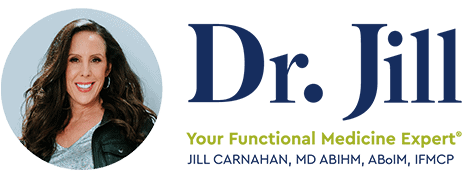




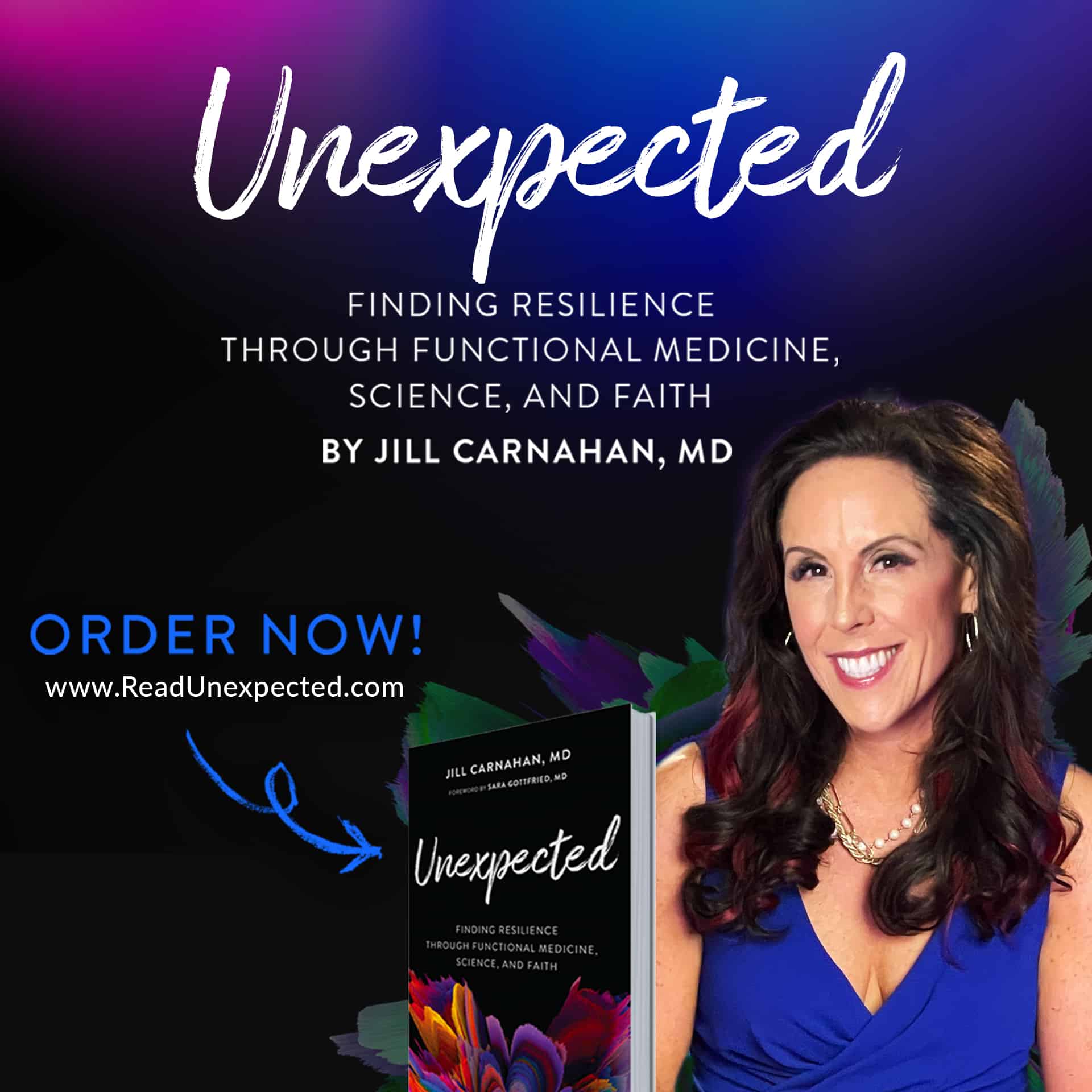


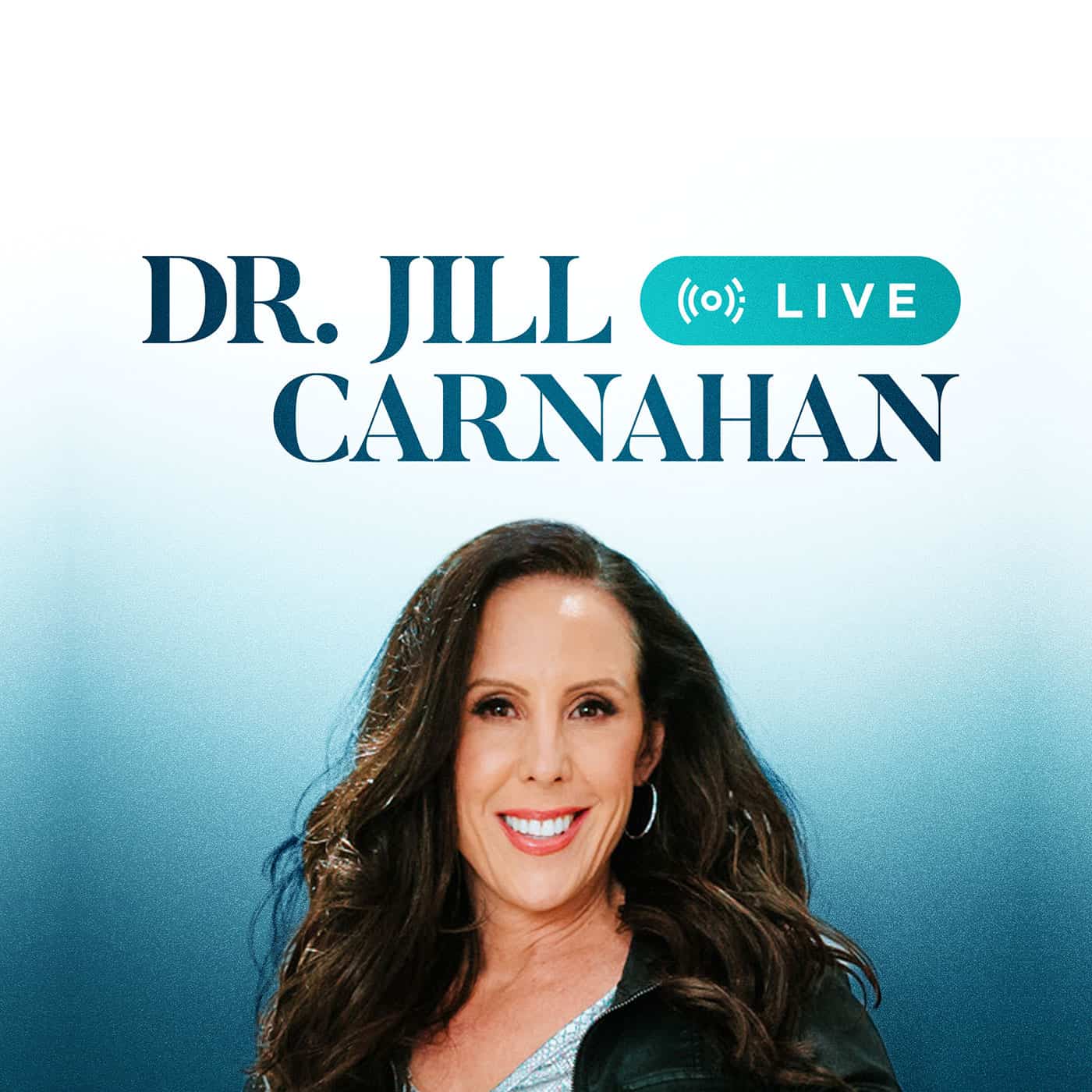
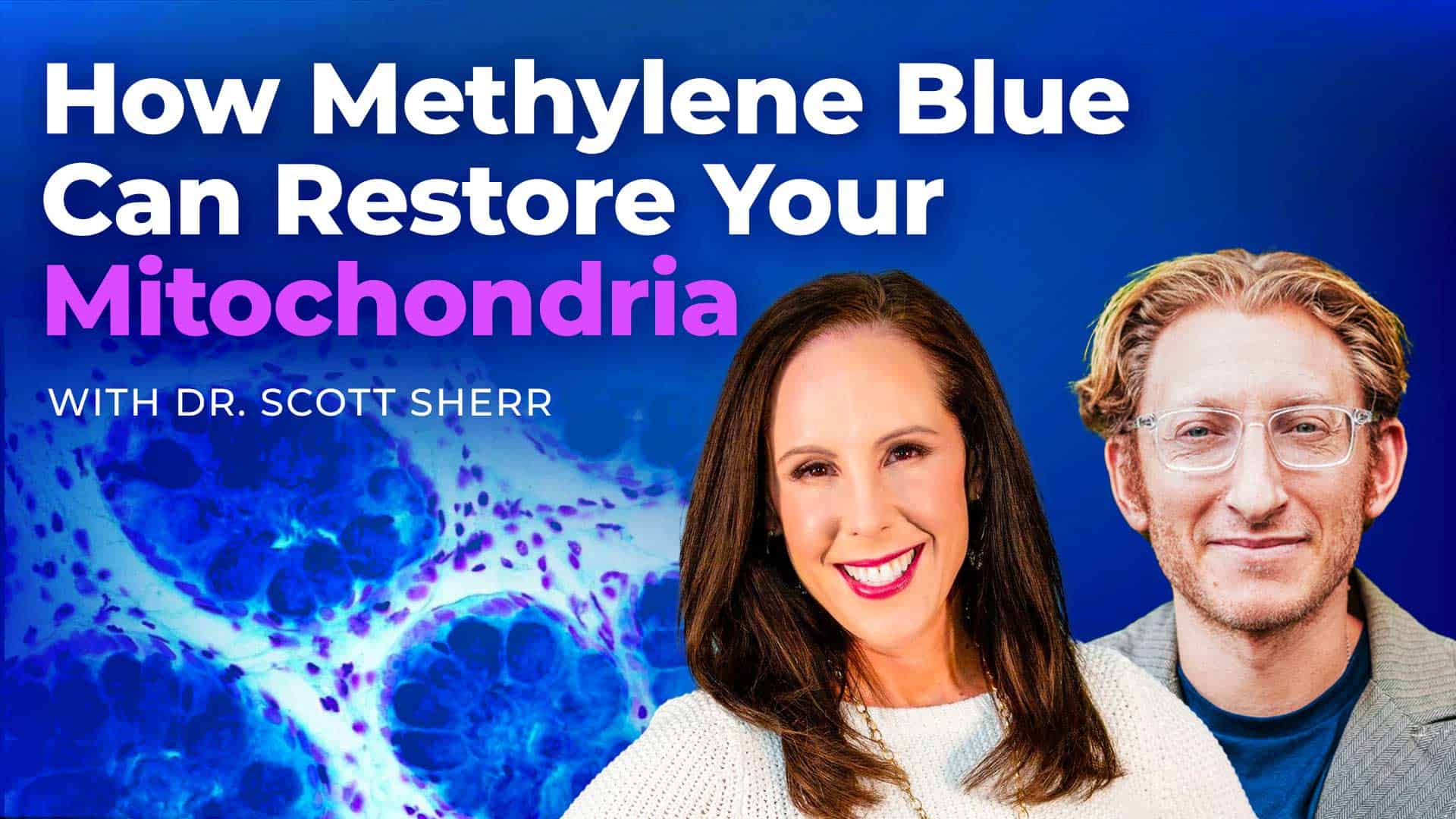
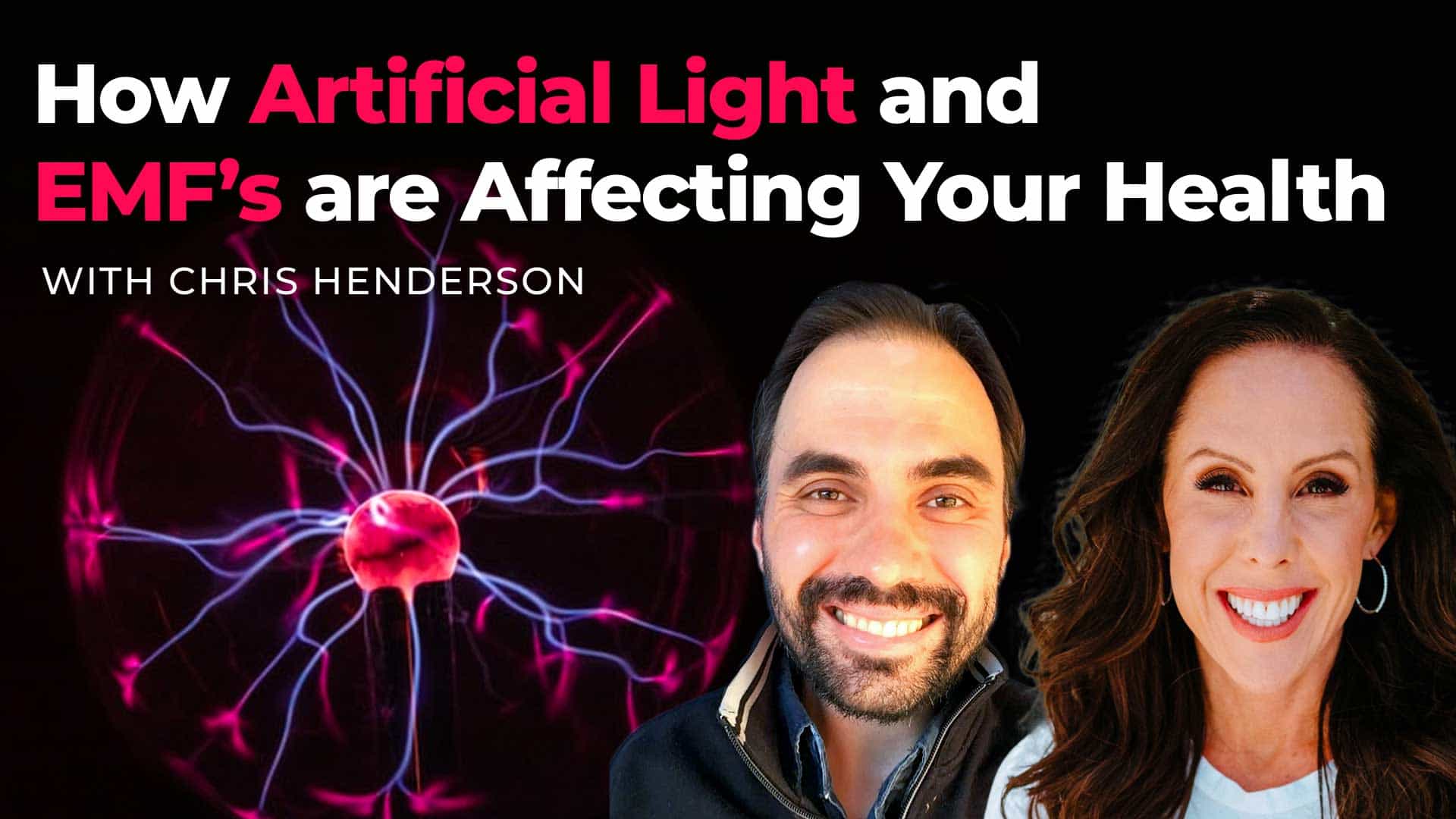
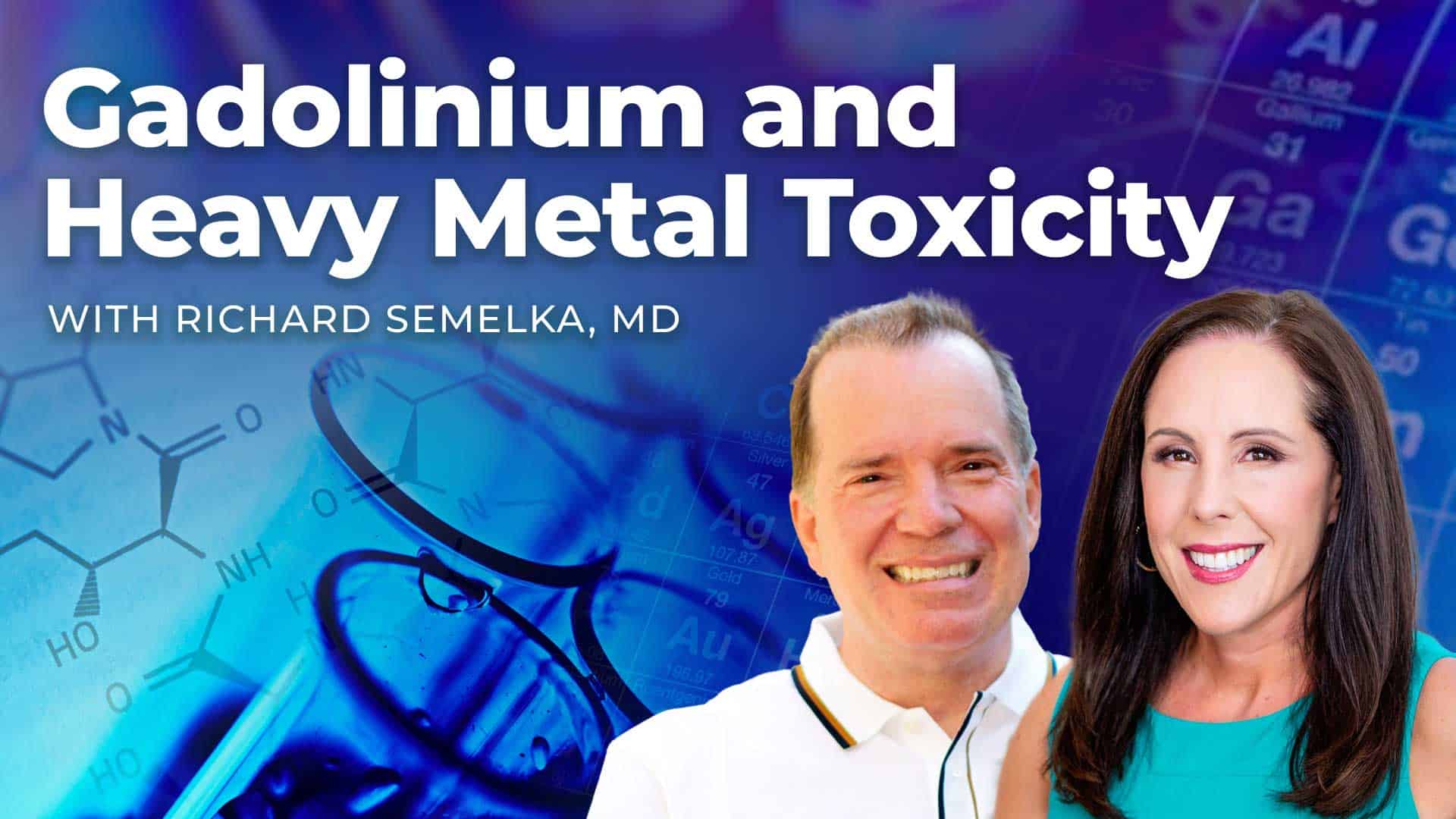
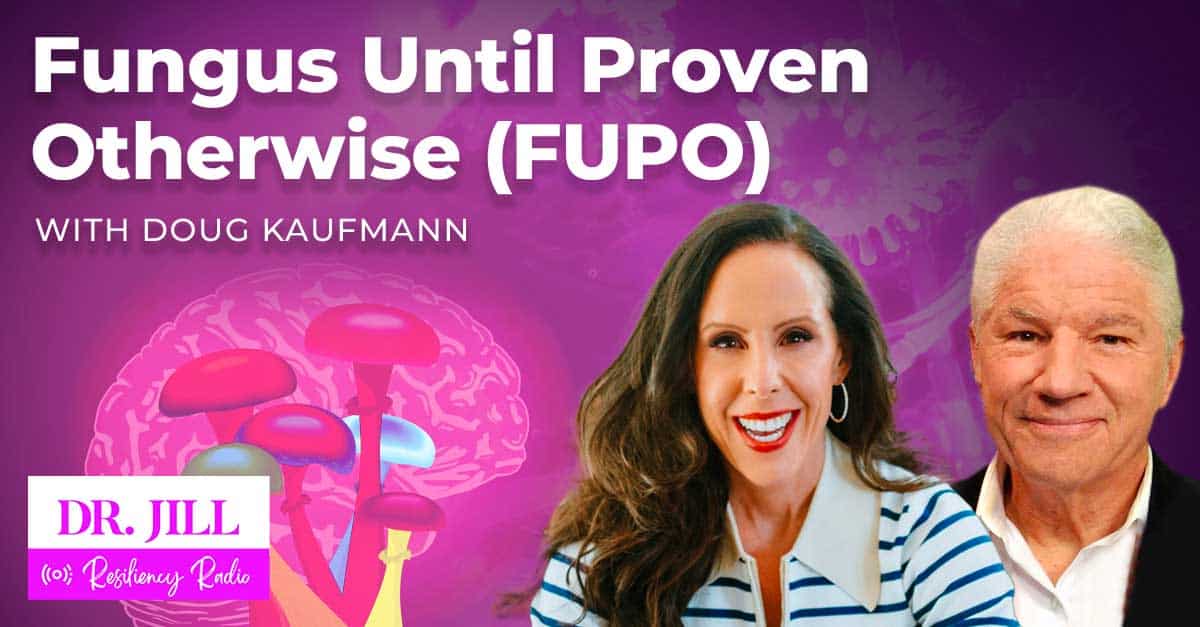

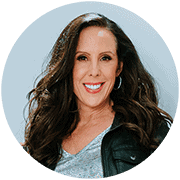
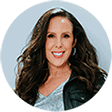
1 Comment
GREAT JOB JILL AND LARA!! SOOOO CRITICAL
Share: